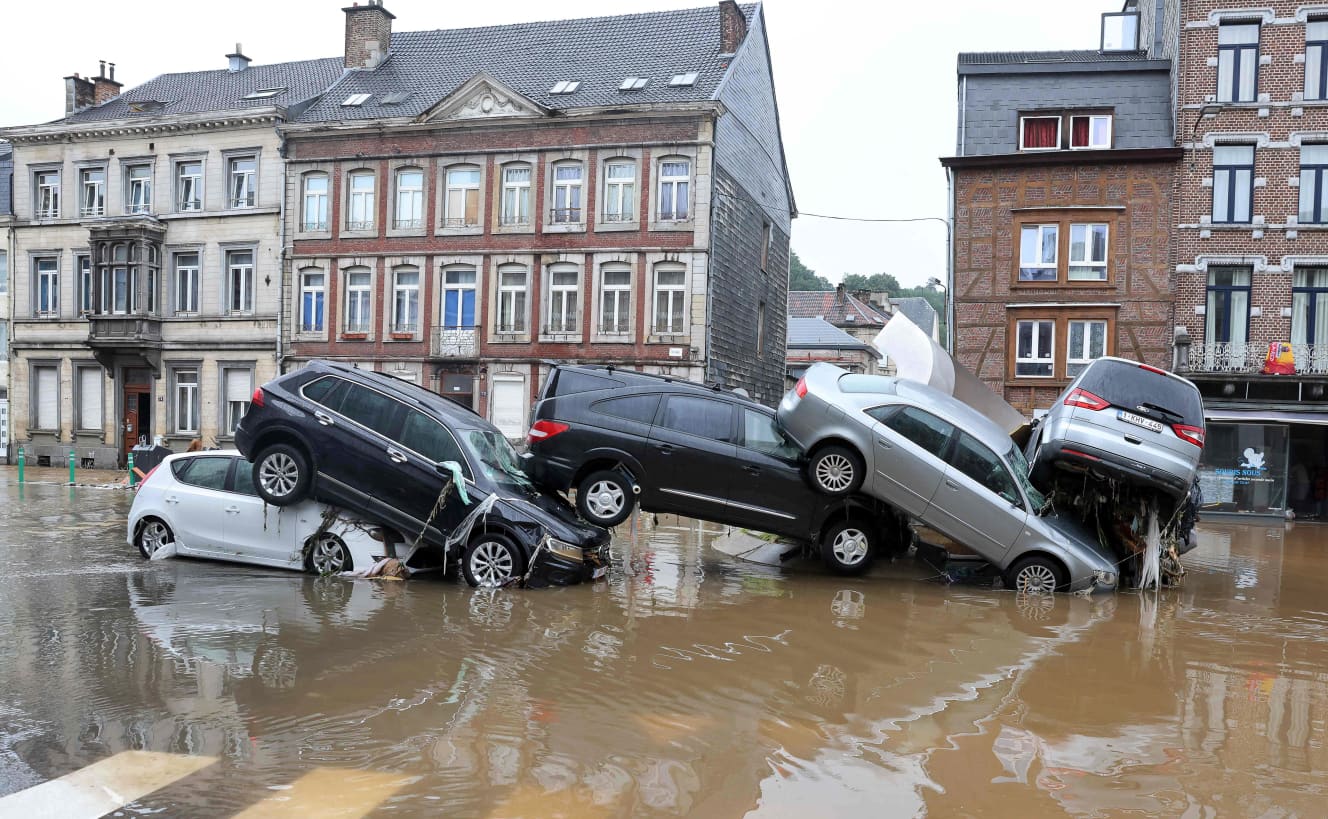Extreme Weather Causes Extensive Damage Around the World…A Future Too Bad to Fail
Special Photo Report
Global warming is making the entire planet go crazy. Thunderstorms, torrential rains, hailstorms, cyclones, heavy cold waves, dust storms–
Belgium “Torrential Rain”.

Japan is not the only country where torrential rains and extremely hot days are on the rise. Take a look at the photos. All over the world, the climate is going crazy.
According to the IPCC, an international organization that assesses climate change, of the 45 areas in the world, heavy rains are increasing in 19 areas in Asia and Europe, and high temperatures are increasing in 41 areas on all continents.
“This year alone has been marked by abnormal weather. In Australia, there was a once-in-a-century flood in March; in June, temperatures near 50 degrees Celsius were observed near Vancouver, Canada, which is supposed to be cooler than the rest of the world; in July, Germany experienced record-breaking rainfall; and according to the IPCC, the frequency of heat waves has increased by about five times compared to pre-industrial times. The IPCC explains that the frequency of heat waves has increased by about five times compared to pre-industrial times. The IPCC explains that the frequency of heat waves has increased by about five times compared to pre-industrial times, and concludes that the cause is global warming brought about by human activities.
As the temperature rises, the amount of water vapor in the air increases, which inevitably leads to an increase in precipitation. As the temperature rises, the amount of water vapor in the air will increase, which will inevitably lead to more precipitation.
“Last year, a temperature of about 38 degrees Celsius was observed in Siberia. If the Arctic becomes hotter, it could lead to more global warming. This is because ice, which is less able to absorb heat, will melt, and the area of the ocean, which is more likely to heat up, will increase. At present, the average global temperature is 1.1 degrees Celsius higher than it was before the industrial revolution, and there are reports that it will rise another 0.4 degrees by 2040. If you live in Tokyo, you can imagine that the whole month of summer will be extremely hot.
The earth is on the verge of collapse.
Hailstorm” in the U.S.

India “Cyclone

Australia: The Great Lightning Strike

Sandstorm, Turkey

The “Great Cold Wave” in the United States

Germany “Torrential Rain”.

From FRIDAY, September 17, 2021
Photo: AFLO